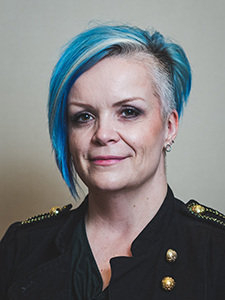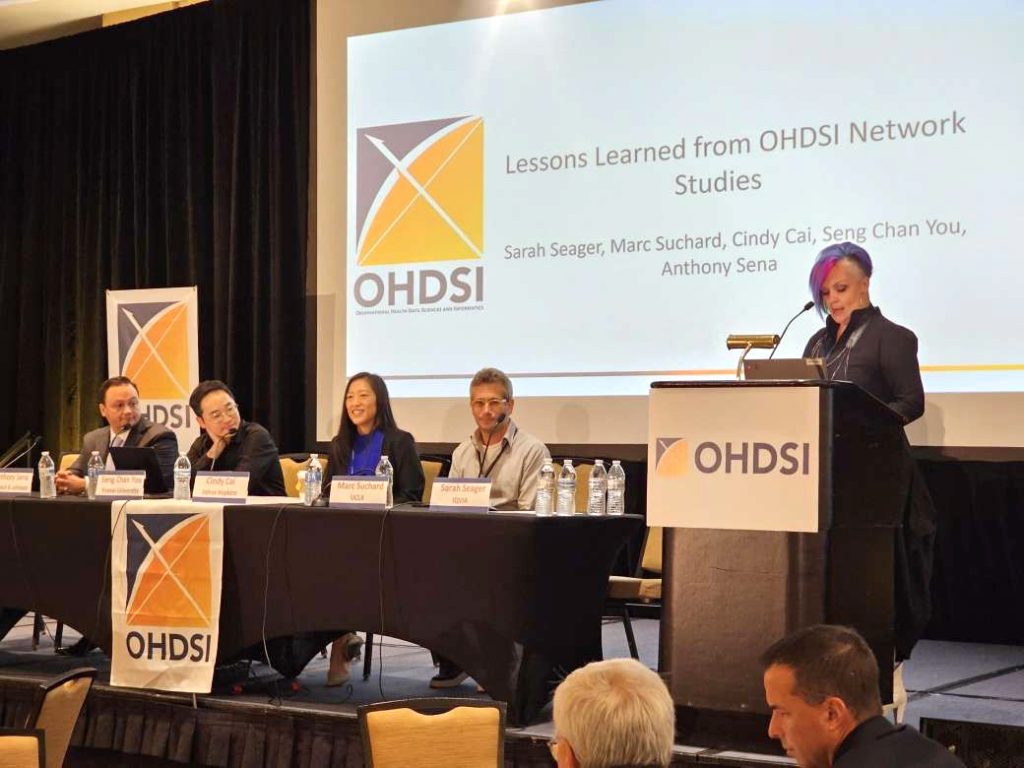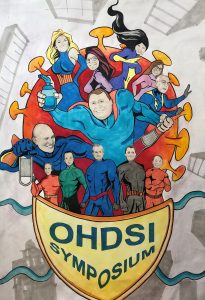- Who We Are
- Updates & News
- Standards
- Software Tools
- Network Studies
- Community Forums
- Education
- New To OHDSI?
- Community Calls
- Past Events
- Workgroups
- Tutorials
- 2025 ‘Our Journey’ Annual Report
- Current Events
- Support & Sponsorship
- 2025 Global Symposium
- 2025 APAC Symposium
- 2026 Global Symposium
- Github
- YouTube
- X/Twitter
- Newsletters
Collaborator Spotlight: Sarah Seager
Sarah Seager is the Senior Director, Analytics & AI at IQVIA. She is an experienced technical senior leader, who develops and leads analytical teams in the world of data science and advanced analytics.
Having built a career mainly within the health sector over a period of 20 plus years, Sarah started her career in the world of data as a data input clerk, working her way up into the realms of senior analytics and then into data management and data science.
In the latest edition of the Collaborator Spotlight, Sarah shares her thoughts on the current path of data management and analytics, why OMOP is an ideal common data model, recent advances around the European community, and how data is similar to another one of Sarah’s passions, art.
You have spent 20+ years working with data, from inputting to your current role of Senior Director, Analytics & AI, at IQVIA. What excites you most about the trajectory of data management and analytics, and how challenging is it to constantly stay on top of the field?

There’s never been a more exciting time in life sciences and health data. A new era of innovation is on the horizon — from AI-powered clinical trials to digital twins and patient companions. The biggest excitement is indeed with generative AI. It will drive much-needed efficiency gains in many areas — from research, drug safety, trial reporting, pricing, patient-centricity, and skills gaps across the enterprise. I am truly excited to see how generative AI can enable creativity, helping those working in healthcare and life sciences to correlate research outcomes faster and engage with patients better. Having an experienced and intellectually curious team around me means I get to implement and witness some of these innovations first hand and that’s truly exciting!
 How did you first connect with OHDSI, and what has inspired you to become a leader in the community?
How did you first connect with OHDSI, and what has inspired you to become a leader in the community?
I first connected with OHDSI back in 2018 when I joined IQVIA. I had come from a world of huge data challenges — either I had no data, or limited data or there were grand schemes to bring disparate data sources into a single data platform which almost always failed. Joining a fast-emerging open community that was centered around standardized data and a world of federated analytics seemed almost mind blowing.
The fact that the community is open to everyone and anyone means that the opportunities to lead, step forward or even just listen from afar is all possible and so for me to be part of this ever-evolving community means I can bring my ideas and thought leadership with me.
In your opinion, what makes OMOP the ideal common data model for standardizing data, and how integral is OMOP to the work being done at IQVIA?
In a nutshell it can be summarised as this: it’s interoperable, it’s scalable and flexible, it holds rich analytical capabilities on a global scale, it has an extensive and more importantly an active community with a plethora of tools and resources available to streamline the adoption and implementation of OMOP. The biggest kudos is that it has regulatory and industry acceptance — a standard that aligns with not only regulatory requirements but also one that’s adopted by major healthcare and research organisations. OMOP is integral to IQVIA’s aim of integrating and harmonising diverse healthcare data sources whilst enhancing our ability to conduct advanced analytics and generate real world evidence.
The Europe Symposium took place in early June, so can you highlight some of the most exciting advances within the European OHDSI community?
There were many exciting topics and players at this years European OHDSI symposium but the biggest one that everyone is aware of and excited to hear about is DARWIN. DARWIN has successfully integrated multiple data partners into its network, expanding its scope and reliability of its real-world evidence capabilities. This impressive milestone enables DARWIN to conduct around 150 studies per year by 2025, significantly contributing to regulatory decisions and public health insights across Europe.
OHDSI veterans know your contributions to the community extend beyond your work with data, and that your art has been featured at previous events. Can you find connections between flourishing in both art and data science, and what type of either creativity or imagination it requires?
The connection between art and data science isn’t always an obvious one but if you think about the data visualisations and outputs produced from analytics, a creative flair can indeed be a huge advantage. Even in my day to day job, having the super power to be able to creatively revamp the most ordinary of PowerPoint slides can make a difference when presenting to an audience.
Besides art, can you share some of your hobbies, and what is one interesting thing that most community members might not know about you?
Professionally I have many hats where I volunteer my time. I’m a STEM ambassador which allows me to use my creativity to enthuse students and pupils around the world of Science, Technology, Engineering and Maths. I also am an active member and volunteer of the Healthcare Businesswomen’s Association. In my own personal time, I’m a boxer, competing powerlifter, an official International Powerlifting Referee and also play rugby for my local women’s team where I’m Loosehead Prop. So yes, I like to keep busy and not afraid of a challenge.

